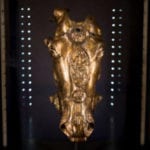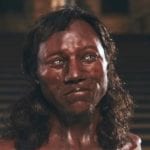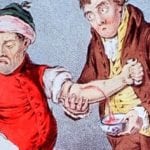 Weird Stuff
Weird Stuff  Weird Stuff
Weird Stuff  Mysteries
Mysteries 10 Tragic Disappearances and Deaths in Joshua Tree National Park
 History
History 10 Ways Childhood Really Sucked in the Old West
 Music
Music 10 Name Origins of Famous Bands from the 1990s
 Religion
Religion 10 Biggest Turnarounds by the Catholic Church
 Weird Stuff
Weird Stuff 10 Unbelievable Times Laws Had Unintended Consequences
 Humans
Humans Ten Historic Women Who Deserve Way More Credit Than They Got
 Movies and TV
Movies and TV 10 Films That Spawned Major Lawsuits
 History
History Ten Times Towns Were Wiped Off the Face of the Earth
 Creepy
Creepy 10 of the Most Disturbingly Haunted Public Houses in the UK
 Weird Stuff
Weird Stuff 10 Niche Subcultures That Are More Popular Than You Might Think
 Mysteries
Mysteries 10 Tragic Disappearances and Deaths in Joshua Tree National Park
 History
History 10 Ways Childhood Really Sucked in the Old West
Who's Behind Listverse?

Jamie Frater
Head Editor
Jamie founded Listverse due to an insatiable desire to share fascinating, obscure, and bizarre facts. He has been a guest speaker on numerous national radio and television stations and is a five time published author.
More About Us Music
Music 10 Name Origins of Famous Bands from the 1990s
 Religion
Religion 10 Biggest Turnarounds by the Catholic Church
 Weird Stuff
Weird Stuff 10 Unbelievable Times Laws Had Unintended Consequences
 Humans
Humans Ten Historic Women Who Deserve Way More Credit Than They Got
 Movies and TV
Movies and TV 10 Films That Spawned Major Lawsuits
 History
History Ten Times Towns Were Wiped Off the Face of the Earth
 Creepy
Creepy 10 of the Most Disturbingly Haunted Public Houses in the UK
10 Surprising Discoveries About Ancient Health Care
We often assume that those who lived before us were inferior in intelligence and accomplishments, especially when we think of ancient medicine. But modern archaeologists are discovering surprising things about antiquated health care. In some cases, it’s as bad as we imagined. In others, the philosophies and methods of health care are strikingly sophisticated for earlier times.
10Egyptians Had The First Governmental Health Care System

At least in terms of health care, ancient Egypt was quite similar to modern developed countries. In Deir el-Medina, an ancient village in the mountains above the Valley of the Kings, written records and physical remains reveal evidence of the first documented governmental health care system.
Under harsh conditions, artisans with unusual literacy and advanced engineering knowledge built the pharaohs’ royal tombs from 1292–1077 B.C. This was about the time of Ramses II and his heirs. The workers left thousands of documents, including everything from letters to lawsuits.
The site was first excavated in the early to mid-1900s, but the bodies in the tombs were left largely untouched because osteology, the study of skeletons, was stuck in its early stages. In 2012, archaeologists returned to study the human remains in greater detail. Their findings confirmed the written records. The workers at Deir el-Medina were entitled to take paid sick days or get free checkups at the Egyptian equivalent of a clinic. However, like so many modern employees, these ancient workers with comprehensive care plans often felt pressured to continue working even while sick. In one mummy, the man had obviously worked while battling osteomyelitis, a blood-borne infection that inflames bone.
The skeletons show the stress of climbing from the Valley of the Kings to the mountain village. But they also reveal that residents with severe disabilities received excellent care. For example, one young man of about 20 years old had a bad right leg from a neurological disease such as polio. But he showed no physical signs associated with climbing to work in the tombs, which suggests that he received a less strenuous role in this society.
Families and friends were also expected to care for the old and the sick. If not, the errant individuals would be shamed publicly through divorce or disinheritance. “A woman named Naunakhte had eight children,” said lead researcher Anne Austin. “In her will, she chastised and disinherited four of them for neglecting her in her old age.”
9Ancient Peru Had The First Limb Surgery

Ancient medical practitioners used a technique called trepanation, which opens a hole in the skull of a living person by drilling, surgical scraping, or sawing. It treated cases of head trauma as well as some other ailments.
In 2004, anthropologists from the University of Central Florida found that shamans in the Chachapoya region of ancient Peru also used trepanation techniques on patients’ lower legs at the fortress of Kuelap. This is the first documented evidence of trepanation used on another part of the body.
The Chachapoya area was inhabited from approximately 800–1535. Their shamans were quite advanced, successfully performing complex surgeries like amputations that clearly healed. As for trepanation on legs, the remains of two otherwise healthy men in this region showed holes drilled in their lower leg bones, probably to relieve fluid buildup from infected injuries. Although unlikely, it’s also possible that bone was removed from these men while they were alive to create amulets or pendants.
The first man was an adult around 30–34 years old. A medical practitioner had drilled a series of holes in his tibia or shinbone, the larger of two human leg bones that connect the knee to the ankle. The holes extend to the center of the tibia, but there’s no evidence of healing. That means the man probably died when the surgery took place. The second male, a teenager, showed two holes drilled into the middle of his shinbone. He appears to have met the same fate as the first man.
Although it looks like both men died during the surgery, it’s also possible that these procedures were done after the men died. A novice may have been practicing his technique on corpses.
8Ancient Doctors Also Treated PTSD

We now have evidence of ancient soldiers in Mesopotamia (modern-day Iraq) suffering from post-traumatic stress disorder (PTSD) as early as 1300 B.C. Researchers from Anglia Ruskin University found medical texts about doctors trying to diagnose and treat warriors from the Assyrian Dynasty who experienced sleep disturbances, flashbacks, and depression, accounts eerily similar to those from modern combat veterans.
“[The ancient warriors] described hearing and seeing ghosts talking to them, who would be the ghosts of people they’d killed in battle—and that’s exactly the experience of modern-day soldiers who’ve been involved in close hand-to-hand combat,” said researcher Jamie Hacker Hughes, director of Anglia Ruskin’s Veterans and Families Institute. He noted that the Mesopotamian warriors fought their battles in the same geographic areas as the most recent Gulf and Iraq Wars.
During the Assyrian Dynasty, men were required to fight every three years as part of their mandatory national service. They faced injury and death from different weapons back then, such as swords, slingstones, and arrows. However, the same stressors—watching their comrades die, fearing death, and more—caused the symptoms of PTSD for them. They also faced a greater possibility of death from injuries because modern surgical techniques were not available to help them.
In ancient times, it was believed that the ghosts or demons of slain enemies caused PTSD symptoms, attacking some of the soldiers left behind and causing a “wandering mind” as punishment from their gods for these soldiers’ sins. Treatments could take the form of medications as well as religious offerings or recitations to chase off the ghosts.
7Ancient Medicine Chest Holds 2,000-Year-Old Eye Pills
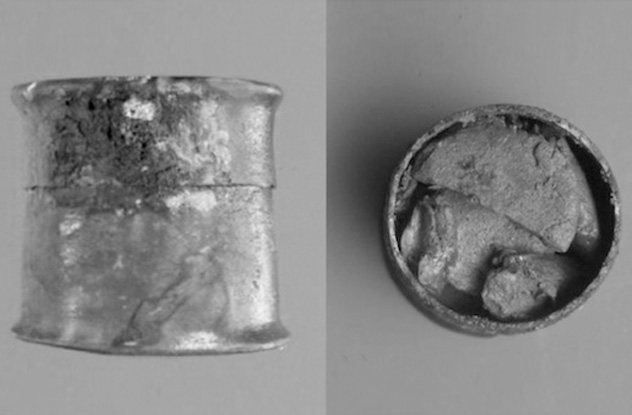
Usually, our knowledge of ancient medicine comes from texts recovered at archaeological sites. But these writings may lack the details and accuracy needed for us to fully understand how ancient medicine worked. That’s why archaeologists became so excited by the discovery of the contents of a medicine chest from a Roman shipwreck near Tuscany around 120 B.C.
Archaeologists believe the vessel, named Relitto del Pozzino, sank during a bad storm near the ancient Etruscan city of Populonia, a key shipping port on the Mediterranean Sea at that time. In recent years, excavators have recovered lamps, glass cups, and other artifacts. But the most interesting discovery was the medical equipment of a Roman doctor who may have been aboard the ship.
Although his medicine chest appeared to be destroyed, a mortar, surgery hook, and bleeding cup survived. Archaeologists also found 136 wooden drug vials and several pyxides, sealed tin containers with 2,000-year-old medicinal tablets in them. Amazingly, the circular, green tablets were completely dry, and modern technology has now identified their ingredients.
“In archaeology, the discovery of ancient medicines is very rare, as is knowledge of their chemical composition,” said researchers in the journal Proceedings of the National Academy of Sciences. “The data revealed extraordinary information on the composition of the tablets and on their possible therapeutic use.”
The pills contained beeswax, starch, iron oxide, several zinc compounds, pine resin, and other animal and plant-derived materials. Based on the ingredients and shape of the pills, researchers believe they were used as an eyewash or a type of eye medicine in ancient times.
6Ancient Rich People Had A Disease Of Modern Poor People
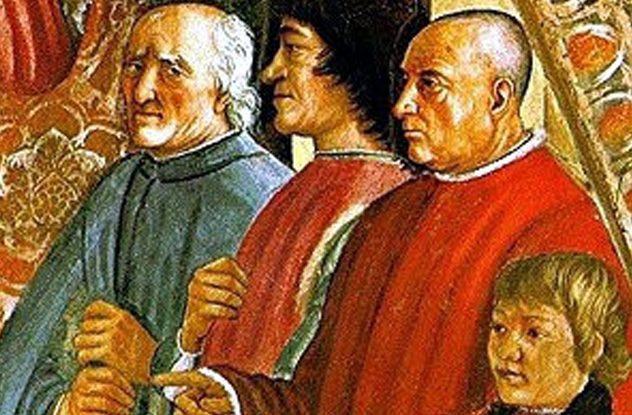
Considered the “first family” in Italy during the Renaissance, the Medicis were the affluent rulers of Tuscany. But money didn’t save their young children from developing rickets, a disease most often linked to poverty in the modern world, especially in polluted, urban areas where residents don’t get much exposure to sunlight. Ironically, the Medicis’ wealth was probably a major factor in their children developing this serious illness.
Rickets is caused by a vitamin D deficiency that softens the bones in children, resulting in bowed legs from trying to walk on weakened bones. Arm bones can also become curved, especially if the child tries to crawl. In the 16th century, six of the nine Medici children who were studied definitely suffered from rickets. Five-year-old Filippo even had a skull deformity from the disease.
With their wealth, it would seem likely that the Medicis could afford the foods, such as cheese and eggs, that would provide vitamin D for their children. So researchers were initially baffled by these findings.
However, an analysis of the children’s bone collagen showed that they weren’t weaned until two years old. Breast milk doesn’t have much vitamin D in it. Back then, the only supplements to breast milk were cereals made of soft bread, which have little vitamin D, and apples, which have none at all. Two of the family’s newborns also had rickets, signifying that their mothers probably had vitamin D deficiencies, too. The researchers believe that the mothers may have developed deficiencies from frequent childbearing or wearing heavy makeup that blocked the Sun.
As for the children, their high social standing probably had the most to do with getting rickets. In those days, poor children ran around outside a lot, so upper-class parents didn’t want their kids to get tans or they might look like the lower class. Instead, upper-class children tended to stay in their grand houses, swathed in many layers of clothes and protected from the sunlight that could have prevented this disease.
5The Ancients Knew About Donkey Milk Before We Did
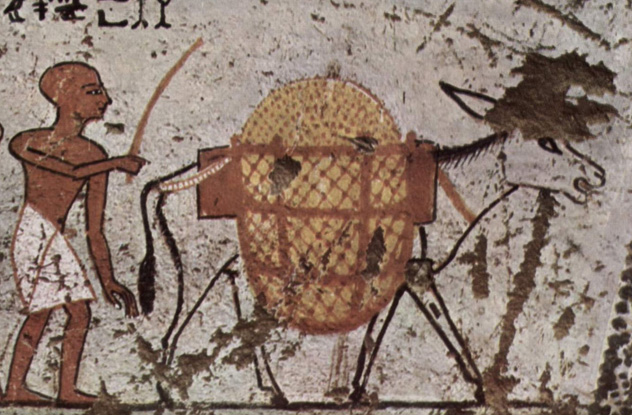
In recent years, donkey milk has been touted as a healthy alternative for children allergic to specific proteins in cow’s milk. For many children, allergies are also a problem with traditional alternatives such as soy, goat’s, sheep’s, and even formulated milk. Donkey milk is more like human milk.
Although clinical studies need to be done, some sufferers of psoriasis, eczema, and asthma have also experienced surprisingly good results from drinking donkey milk or using soap derived from it. Even Pope Francis has revealed that he received donkey milk as a baby.
But the benefits of donkey milk are simply a rediscovery of what our ancestors already knew. Hippocrates, “the father of medicine,” prescribed donkey milk for many conditions from nosebleeds to snake bites. Supposedly, Cleopatra bathed in it for cosmetic purposes. The ancient Greeks fed it to their kids, while the ancient Romans used it to soften their skin.
However, at least one problem needs to be overcome. Donkey milk is much harder to produce than cow’s milk. While a cow has four teats that can produce about 10 liters (2.5 gal) of milk per day, a donkey only has two teats that produce about 1 liter (0.25 gal) per day. In addition, a donkey only gives milk for approximately six months after having a foal and only if the foal is nearby.
4Ancient Medical Texts Written On Bamboo Strips
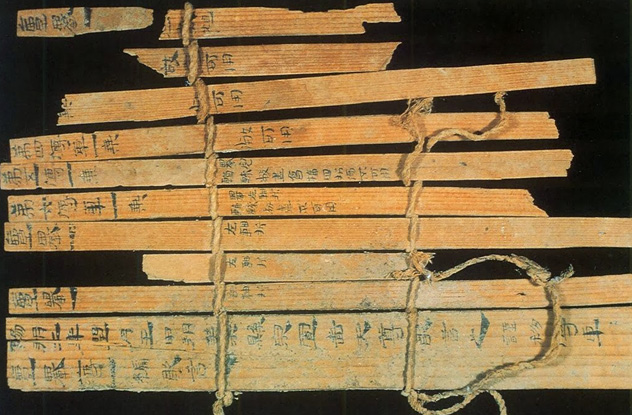
On a construction site in Chengdu, the capital of Sichuan Province in China, workers discovered 920 bamboo strips that served as medical texts for the treatment of people and horses approximately 2,000 years ago. These ancient texts belong to the school of Bian Que, a medical pioneer who focused on diagnosing disease by taking a patient’s pulse and doing a physical examination. At that time, bamboo strips were often used for written texts.
In China, Bian Que is a legendary physician who is credited with using anesthesia and performing the world’s first organ transplant. The 920 bamboo strips include 184 strips of veterinary medicine for horses and 736 strips divided into nine different medical books for humans. In addition to pulse-taking, some of the books discuss surgery, dermatology, internal medicine, ophthalmology, traumatology, and gynecology. Some of the treatments include taking bull’s urine for jaundice and chilies for headaches.
A figurine approximately 14 centimeters (5.5 in) in length was also recovered from the site. This figurine has major acupuncture points marked on it and may give us some clues to how acupuncture evolved as a treatment option.
3The Baghdad Battery May Have Been An Analgesic
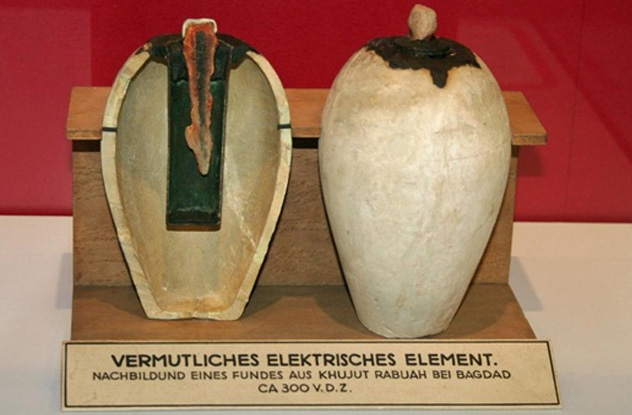
About 75 years ago, German archaeologist Wilhelm Konig, director of the Baghdad Museum, announced the discovery of the 2,000-year-old Baghdad battery. These batteries were small terra-cotta jars with copper cylinders and iron rods inside. Konig believed these batteries may have been used to electroplate gold onto silver items. When linked together, they could produce as much as 4 volts of electricity. These batteries were conservatively dated from 250 B.C. to A.D. 640.
However, as we’ve discussed before, these artifacts were out of place. It simply didn’t make sense that they would exist at the historical time and place in which they were discovered. For many people, Konig’s explanation was unsatisfactory, so the battery’s purpose remained a mystery.
Enter Paul T. Keyser, a researcher from the University of Alberta who proposed a medical theory in the Journal of Near Eastern Studies in 1993. He believed that the Baghdad battery may have been a medical device used to alleviate pain, much like the ancient Greeks numbed an inflamed foot by standing on an electric eel until the pain went away. Keyser thought it possible that these devices were used in places like Mesopotamia where there were no electric fish. Bronze and iron needles may have been used to conduct electricity from the batteries in a type of electro-acupuncture, similar to a Chinese treatment used at that time.
2Blackbeard Made Health Care A Priority
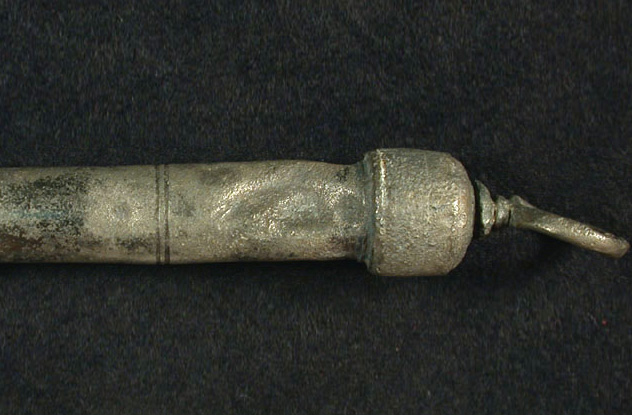
In 1717, the notorious pirate Blackbeard easily captured his flagship, the Queen Anne’s Revenge, from the original French crew because they were mostly sick or dead from illness. However, Blackbeard controlled the ship for less than a year. In early 1718, the vessel got stuck on a sandbar in North Carolina. Taking some of his best men and almost all of his stolen goods, Blackbeard abandoned the ship and most of his crew. But he was later killed by the Royal Navy in November 1718.
Blackbeard was healthy enough to fight hard, as he tried to board an enemy ship during that final skirmish. “He stood his ground and fought with great fury, till he received five and 20 wounds, and five of them by shot,” wrote Captain Charles Johnson about Blackbeard in 1724. “At length, as he was cocking another pistol, having fired several before, he fell down dead.”
The Queen Anne’s Revenge was found in 1996, and archaeologists have been excavating the wrecked ship ever since. Recently, they made some surprising discoveries public. According to historical records and newly discovered artifacts, it seems that Blackbeard made a great effort to keep his crew healthy. Many things could happen at sea, such as wounds, diseases, burns, toothaches, and amputations. To Blackbeard, health care was such a priority that he forced three surgeons from the former French crew of the Queen Anne’s Revenge to stay onboard the captured ship. The excavation has shown that Blackbeard probably confiscated medical equipment from the captured ship as well.
The archaeologists found a urethral syringe used to treat syphilis with mercury. However, if the syphilis didn’t kill the sailors, mercury poisoning would. Scientists also found two enemas that would have pumped fluid into the rectum, although they weren’t sure why these mechanisms were used or what they contained so long ago. Equipment for bloodletting, medicine preparation, and surgery was also discovered, along with galley pots for storage of potions, salves, and balms.
1Siberia Was A Sophisticated Surgery Center

Archaeologists were astounded to discover that the ancient nomads of Siberia created a major skull surgery center about 2,300–2,500 years ago. Examining three skulls (two men, one woman) from the Altai Mountains, a team of modern neurosurgeons, archaeologists, and anthropologists found that the ancient Siberian surgeons expertly wielded one primitive tool to scrape the skull with sophisticated techniques. They also appeared to adhere to the Hippocratic Corpus, a set of medical texts devised in Greece between the sixth and fourth centuries B.C.
One of the male patients had a blood clot from head trauma that probably caused nausea, headaches, and other symptoms. It’s believed that trepanation was used to remove the clot. However, the biggest surprise is that the skull shows bone growth after the surgery, meaning the man lived for many years afterward.
The second male didn’t show evidence of head trauma, so it’s believed that the surgeon was trying to fix a congenital skull deformity. With both of these men, the surgeons made a small hole where they could get to the brain with minimal damage to the membrane and joints.
The woman showed trauma from a fall, but didn’t appear to survive her surgery. Her doctor made several mistakes. So even in ancient times, the choice of surgeon was critical.
The actual scraping tool wasn’t found at the site, but archaeologists suspect it was a bronze knife. It’s possible that early Siberians were incredibly skilled with skull surgeries because they did a lot of work with cutting animal bones.
“Honestly, I am amazed,” said Novosibirsk neurosurgeon Aleksei Krivoshapkin, who examined the skulls. “We suspect now that in the time of Hippocrates, Altai people could do a very fine diagnosis and carry out skillful trepanations and fantastic brain surgery.”
